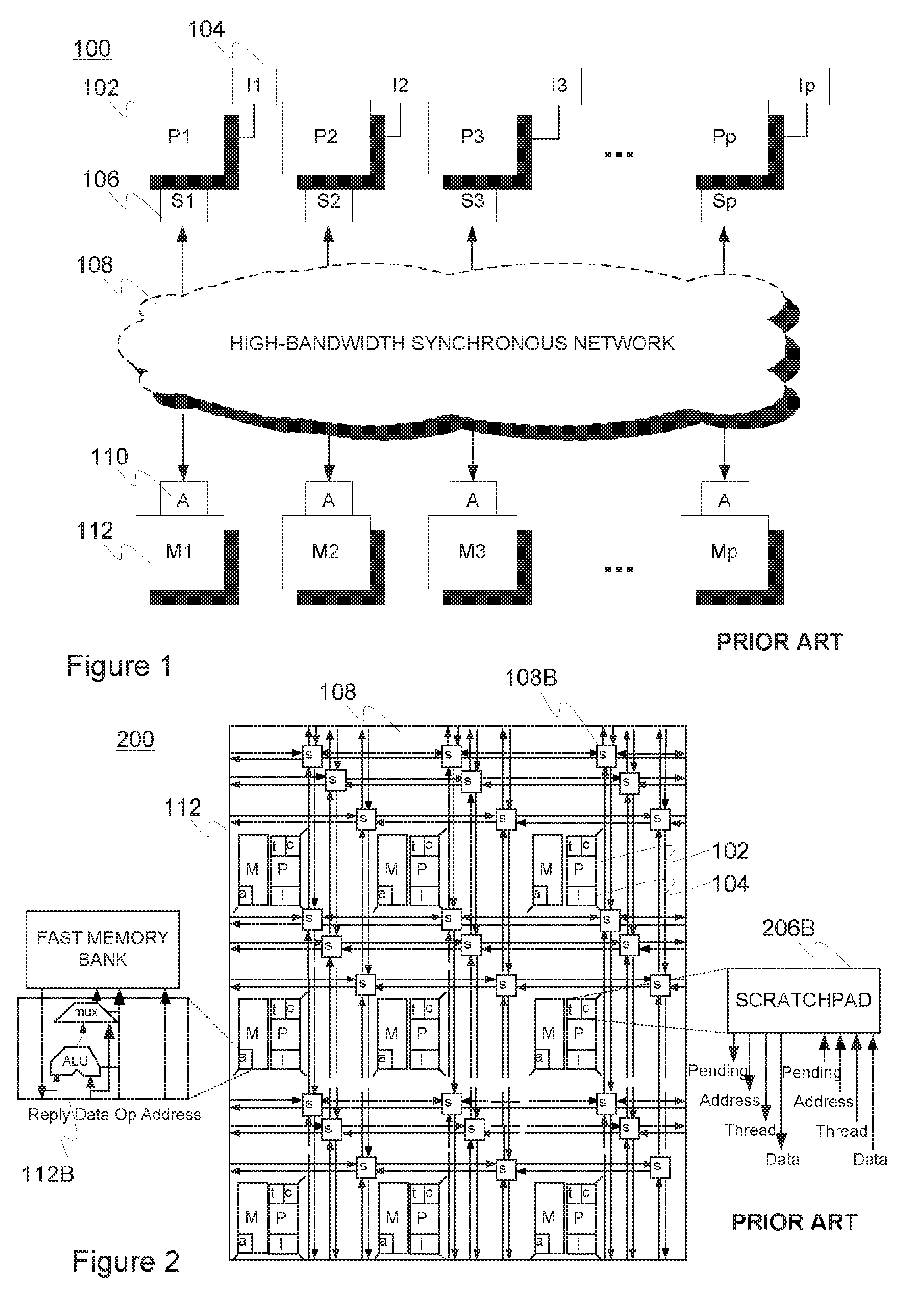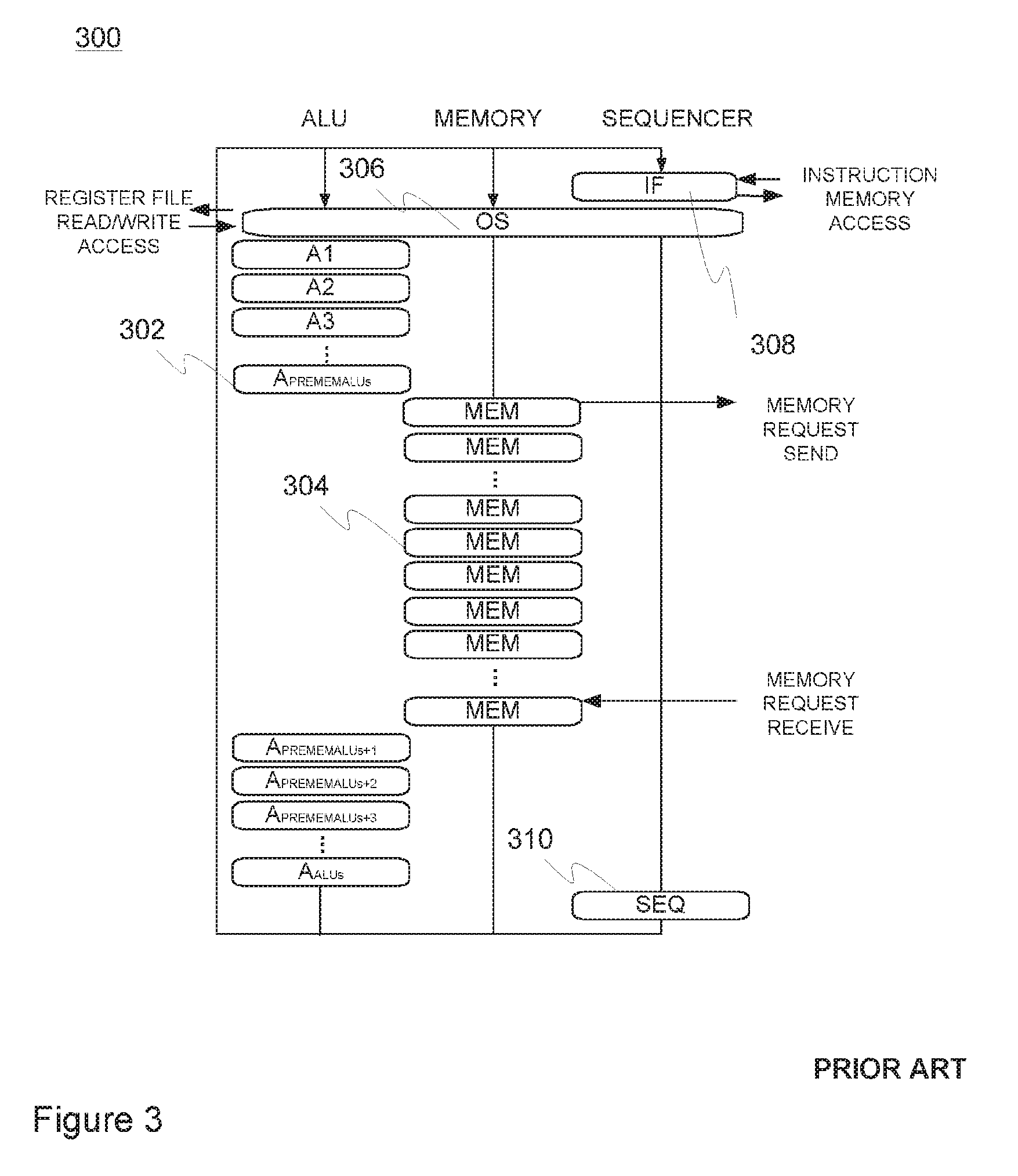Floating-point supportive pipeline for emulated shared memory architectures
a shared memory and floating point support technology, applied in the field of computer science and computer architectures, can solve the problems of destroying the performance of communication intensive problems, and affecting the performance of synchronicity maintenance, and affecting the performance of caches. and synchronicity maintenance,
- Summary
- Abstract
- Description
- Claims
- Application Information
AI Technical Summary
Benefits of technology
Problems solved by technology
Method used
Image
Examples
Embodiment Construction
[0040]FIGS. 1-3 were already contemplated hereinbefore in connection with the description of both background and historical data relating to the origin of the present invention.
[0041]FIG. 4 illustrates an embodiment of the present invention incorporating a floating point-aware ESM pipeline architecture 400.
[0042]The pipeline comprises separate, functionally and logically parallel, branches 414, 416 for integer and floating point operations, respectively. The branches 414, 416 comprise a plurality of functional units (FU) such as multiple ALUs 402, 402b, 402c and multiple FPUs 404, 404b, 404c for carrying out operations such as predetermined arithmetic and logical operations on the data provided thereto. Latency or complexity of the functional unit is depicted by the size, or length, of the corresponding block.
[0043]The layout of the functional units 402, 402b, 402c, 404, 404b, 404c is merely exemplary in the figure and in other embodiments, the positioning, number and nature / latency...
PUM
 Login to View More
Login to View More Abstract
Description
Claims
Application Information
 Login to View More
Login to View More - R&D
- Intellectual Property
- Life Sciences
- Materials
- Tech Scout
- Unparalleled Data Quality
- Higher Quality Content
- 60% Fewer Hallucinations
Browse by: Latest US Patents, China's latest patents, Technical Efficacy Thesaurus, Application Domain, Technology Topic, Popular Technical Reports.
© 2025 PatSnap. All rights reserved.Legal|Privacy policy|Modern Slavery Act Transparency Statement|Sitemap|About US| Contact US: help@patsnap.com



